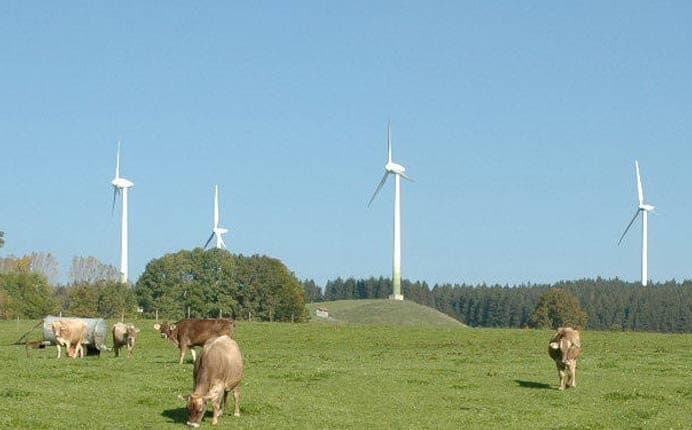
A small village in Germany has been setting a pioneering example for the use of renewable energy over the past two decades. The Bavarian village of about 2,600 residents, called Wildpoldsried, has spent the past 18 years investing in a holistic range of renewable energy products, which include 4,983 kWp of photovoltaics, five biogas facilities, 11 wind turbines and a hydropower system. According to recent reports, this has resulted in the village exceeding energy independence, as it now produces 500% more energy than it needs, which also means that they are able to profit from sales of the surplus power back to the grid.
Strengthened by government subsidies which lower costs, reduce dependence on fossil fuels, and move the nation entirely away from nuclear power, Germany has gained huge traction within its renewable energy projects in recent years. This transformation is now known as the Energiewende and means that German residents will be getting 30 percent of their power from renewable sources in the very near future. This figure is currently twice as much renewable energy as the US currently receive.
The village of Wildpoldsried has so far exceeded similar successes across the country, which is a result of their longstanding commitment to renewable energy that began in 1999 when the city council created a document that looked at how the town could encourage growth and invest in new community facilities without creating debt. This document is titled “Wildpoldsried Innovativ Richtungsweisend” (WIR-2020, or Wildpoldsried Innovative Leadership). Biocycle explains that the WIR-2020 contained three main areas of focus:
“1) Renewable Energy and Saving Energy; 2) Ecological Construction of Buildings Using Ecological Building Materials (mainly wood-based), and 3) Protection of Water and Water Resources (both above and below ground) and Ecological Disposal of Wastewater.”
By creating these three clear areas of focus, Wildpoldsried aimed to produce 100 percent of their electricity from renewable sources by 2020. However, due to being a community without thriftiness, as one resident explained, the goal was achieved a lot faster than was expected at the time. The village began producing 321 percent of the electricity needed by 2011, as well as receiving $5.7 million in payments for the surplus.
The efficient village is also home to several municipal and residential biomass heating systems and 2,100 m² of solar thermal systems, as well as having many electric cars on the roads. With a huge diversity of renewable energy sources, Siemens explains that their smart grid “maintains the balance between energy production and consumption and keeps the power grid stable.” Windpoldsreid’s Deputy Mayor, Günter Mögele, also explained to the Financial Times, “I think people were surprised that the Energiewende is happening so fast.” Windpoldsried is a great example of what can happen on a local level when the residents and municipalities come together and take matters into their own hands.
What are your thoughts? Please comment below and share this news!


